After Yangshuo County, my brother Chad and I boarded a plane and flew west and north to the city of Chengdu, where our cousin and his family live. Chengdu is known, among other things, for its opera houses and tea houses, its spicy food, its relaxed lifestyle, and its giant pandas. Located on a plain, it is laid out in neat “ring rows” with a statue of Mao at its center. Just to the west lie the beginning of the Tibetan mountains and to the north, east, and south, almost every type of landform you could imagine. An announcement over the plane’s loudspeaker as we landed informed us that it is called China’s “happiest city.”
The highlight of our visit there was spending time with our cousin Travis, his wife Judith, and their two little girls, Kalea and Kynzie. We also had the privilege of meeting Carol, who lives with them. Here they all are with a fat panda at the Panda Research Base we visited.
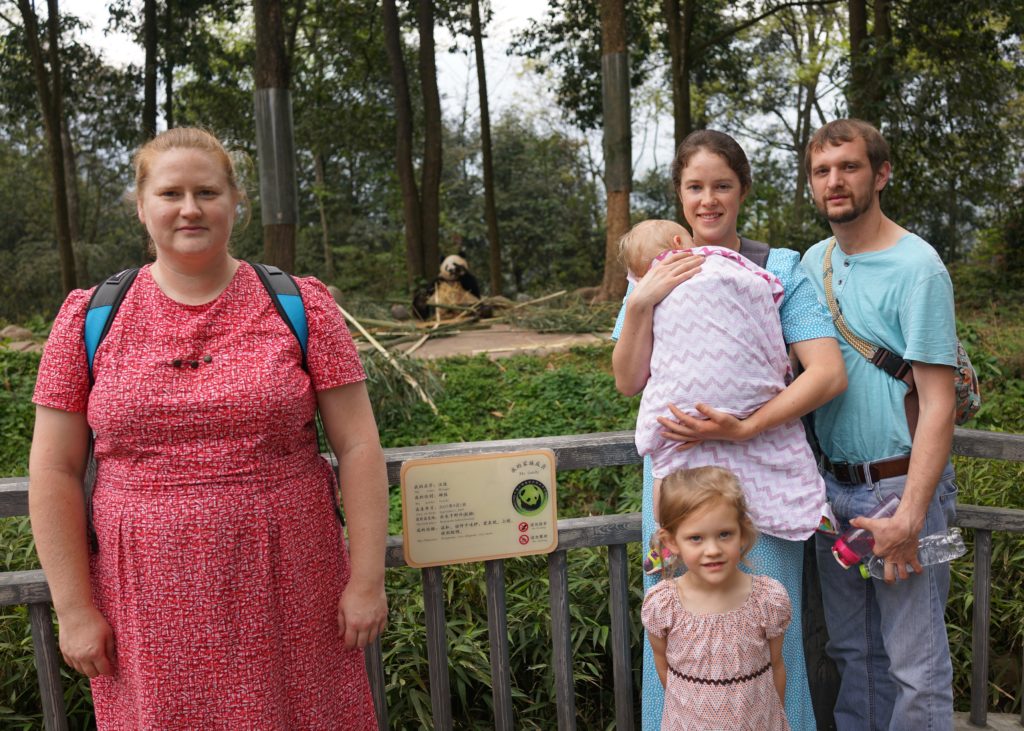
Like most city dwellers—which is the majority of China—they live floors above ground in an apartment building in a gated complex. Their complex is very pleasant, planted with trees and crossed by neat sidewalks. Like almost everywhere we visited in China, little old cleaning ladies—or occasionally cleaning men—are always on hand, patrolling the sidewalks with their brooms and dustpans just to keep things tidy.
Our first night in Chengdu, we ate at the Bamboo Restaurant, a little place in a bamboo grove the locals love. The cook is amazing. She heats a little oil in the bottom of a pan, throws in her vegetable or meat with a few spices, squirts oil on the fire to make it blaze up, shakes the pan for a minute or two until the food is cooked, and is on to the next delicious dish. What amazed me most is that she does all of it with her bare hands, unbothered by flames.
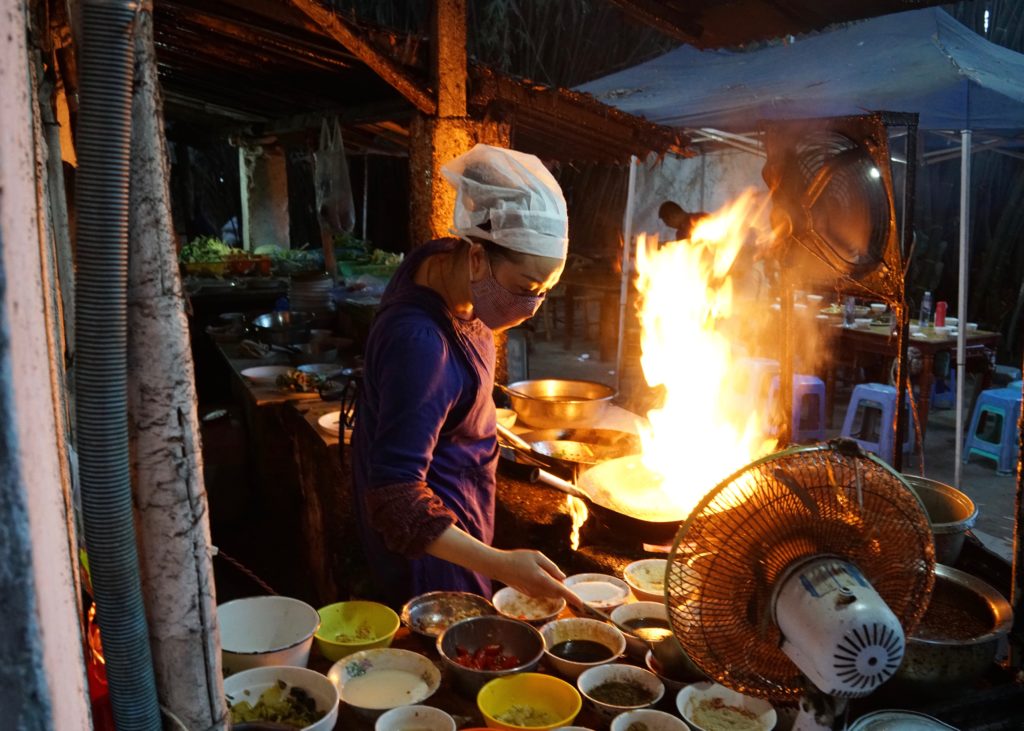
Chengdu is capital of the Sichuan Province, which is known for its spicy “hot pots.” Here is an array of hot stuff—they call it chili—sold at the market.
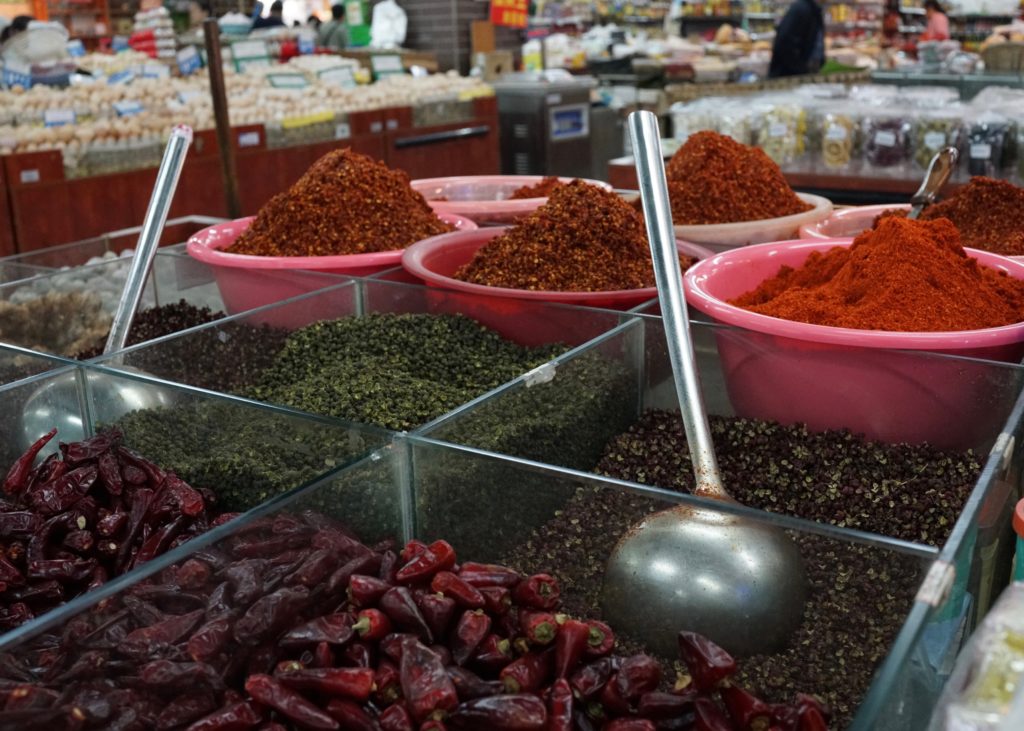
I have never before liked spicy foods, but Chengdu may have taught me differently. The Sichuan flavors are delicious. One day we tried the numbing pepper fish hot pot. Numbing pepper, distinctive to this area, is not spicy in the way we usually think of pepper, but it does make your tongue vibrate and your mouth numb. My cousin says those vibrations are moving at the speed of an engine.
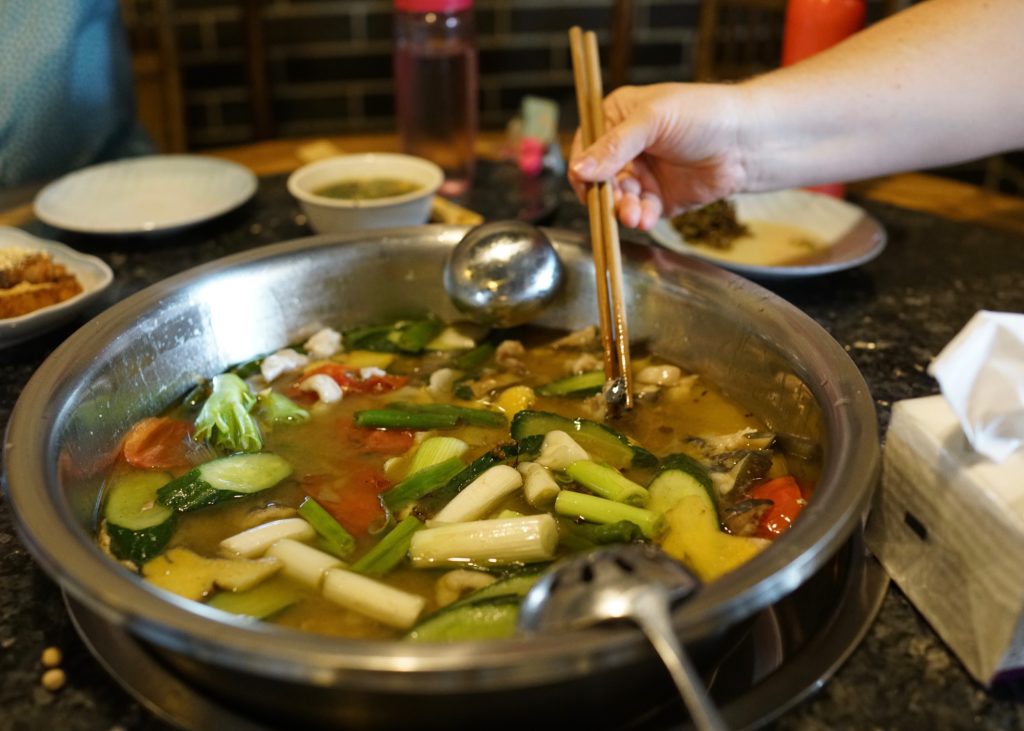
In China, people eat all sorts of vegetables we never think of eating in the States.
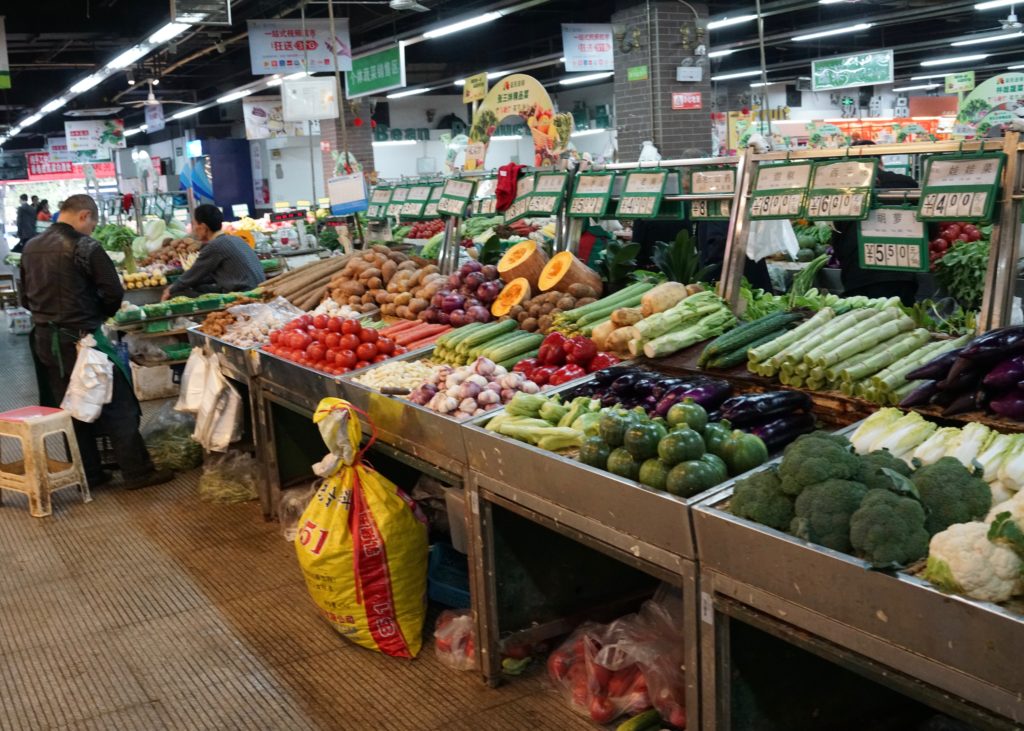
And their meat choices are just as broad. Notice the pig feet in the bottom right corner of this picture.
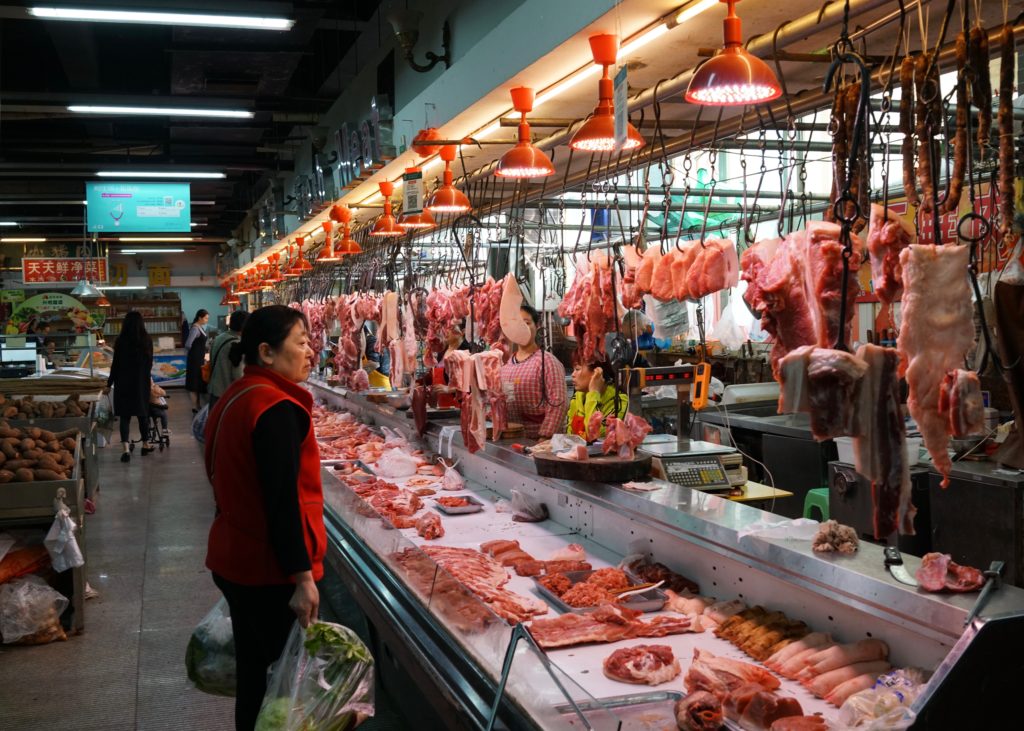
Here are rabbits for sale, complete with a lucky rabbit foot.
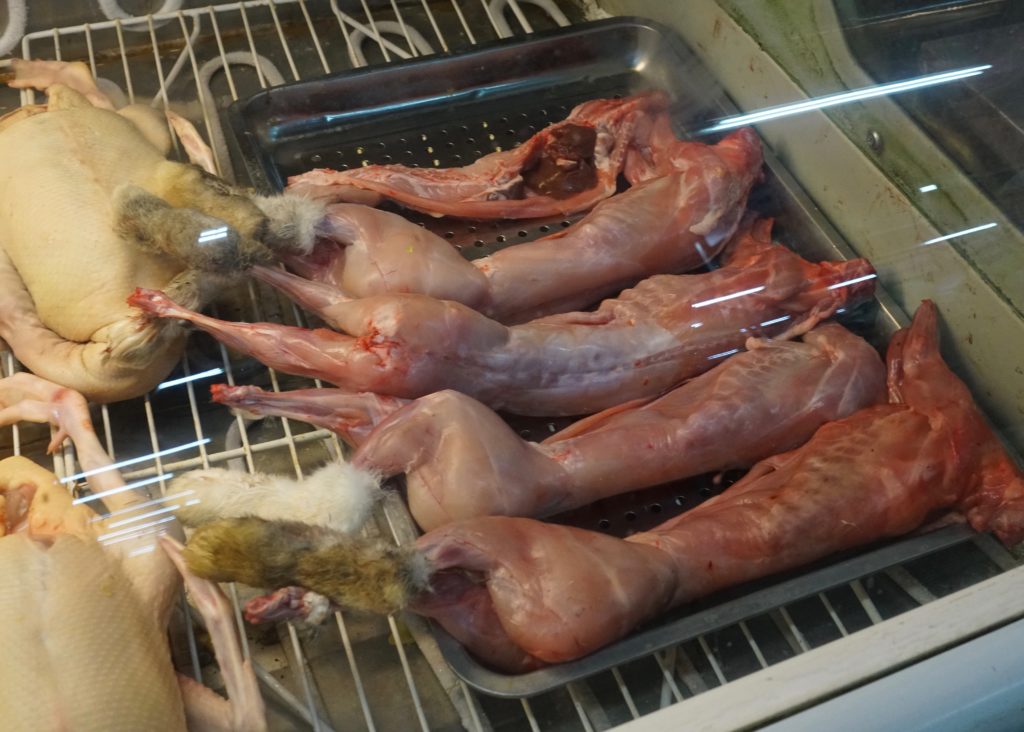
As well as whole chickens, including the feet and the heads.
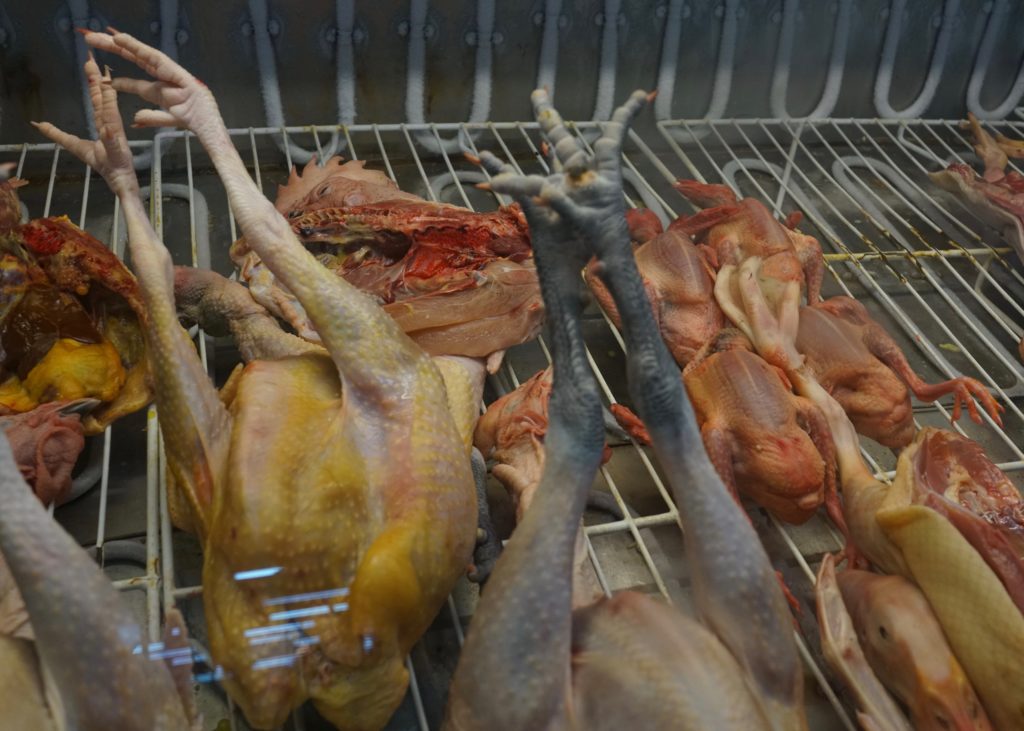
In the food court one evening, we tried squid legs.
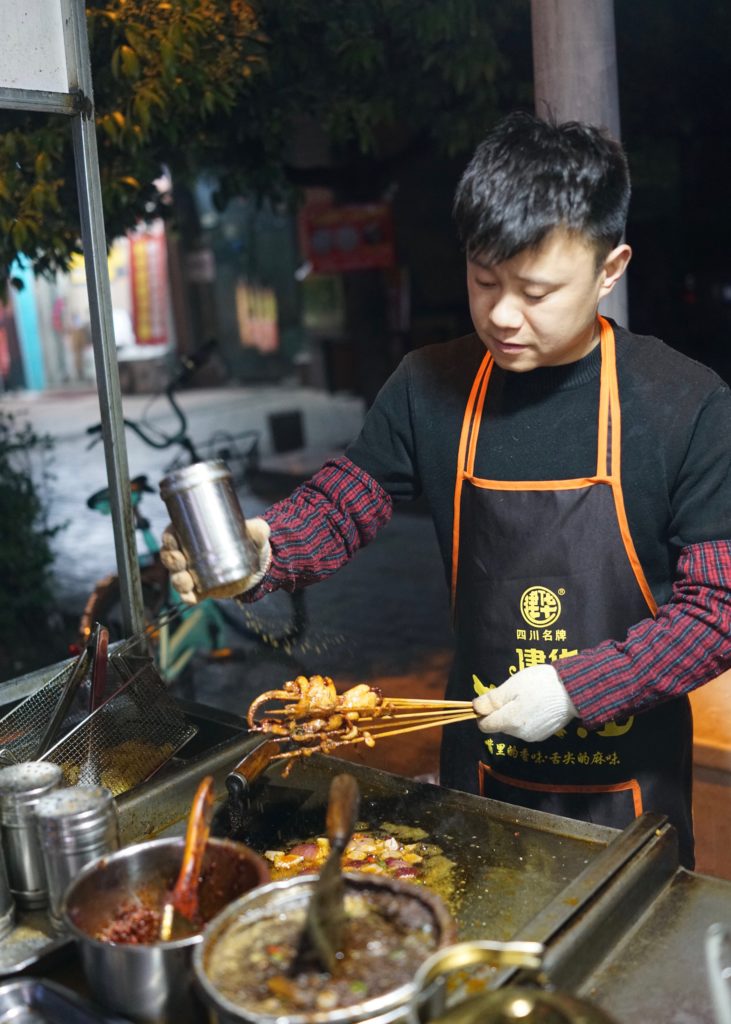
We thought we saw smoked cats hanging up for sale at one place, though on looking into the matter further, I’m guessing these are smoked civets, which is a cat-like wild animal related to the ferret. People sometimes do eat cat and dog in China, but the practice is not looked on with favor by the younger generation.

China has had a long and bloody history, and their broad food choices of today were a matter of necessity in the past—people ate what was available and learned how to make it delicious in the process. Visiting China made me realize how limited my own food choices have been. Why NOT eat pig tails and sweet potato tops and the meat of a fish cheek, after all? They are as nutritious as anything else and generally tasty, too.
Here, a man at the food court twirls dough for our strawberry pastry, paper thin and so delicious.
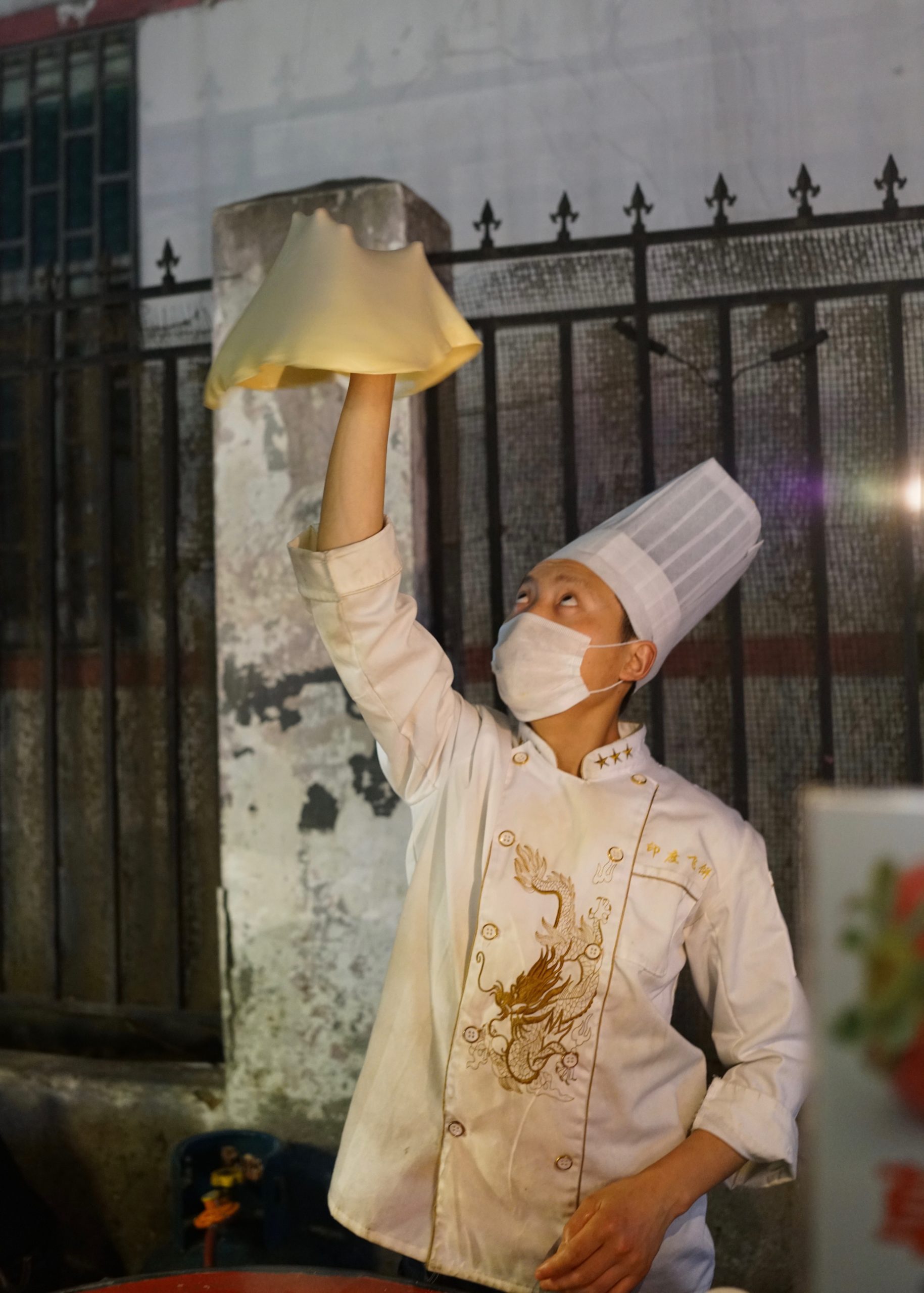
Below is Jinli Street, a popular tourist destination with all sorts of little shops and stands selling unique items and food of every kind. The man in traditional clothes at the top of this post was photographed on Jinli Street.
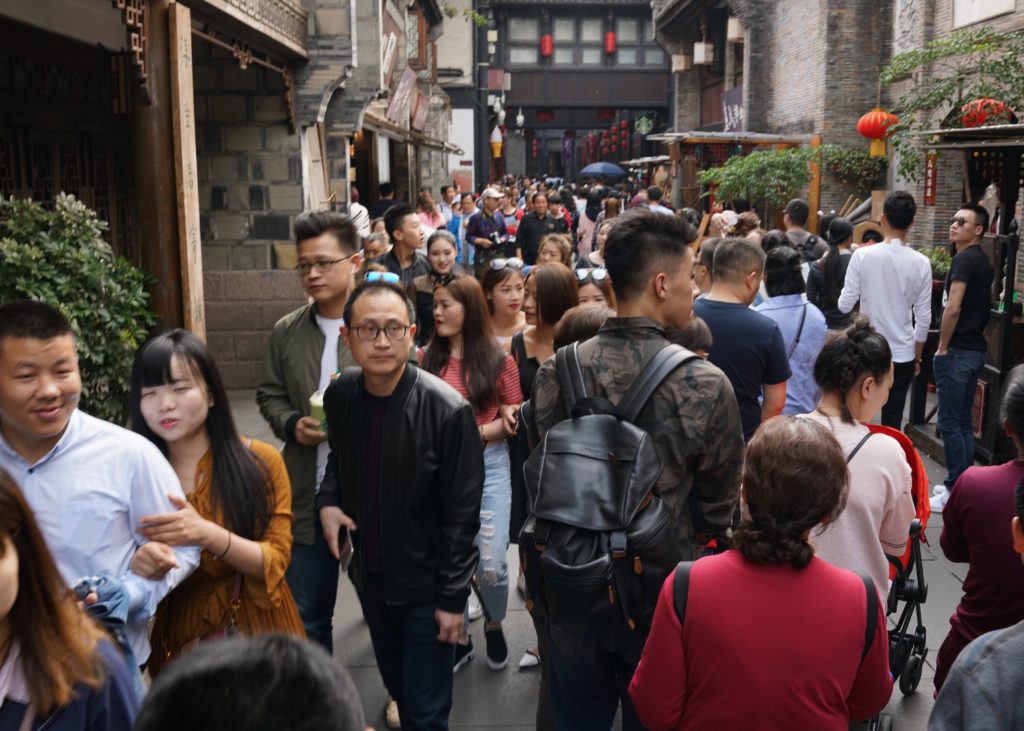
We stopped to watch a Pakistani men make a sand picture in a glass bottle. There are two of them who work as a team on opposite sides of Jinli, and Chad bought a bottle for Mom from this man’s partner.
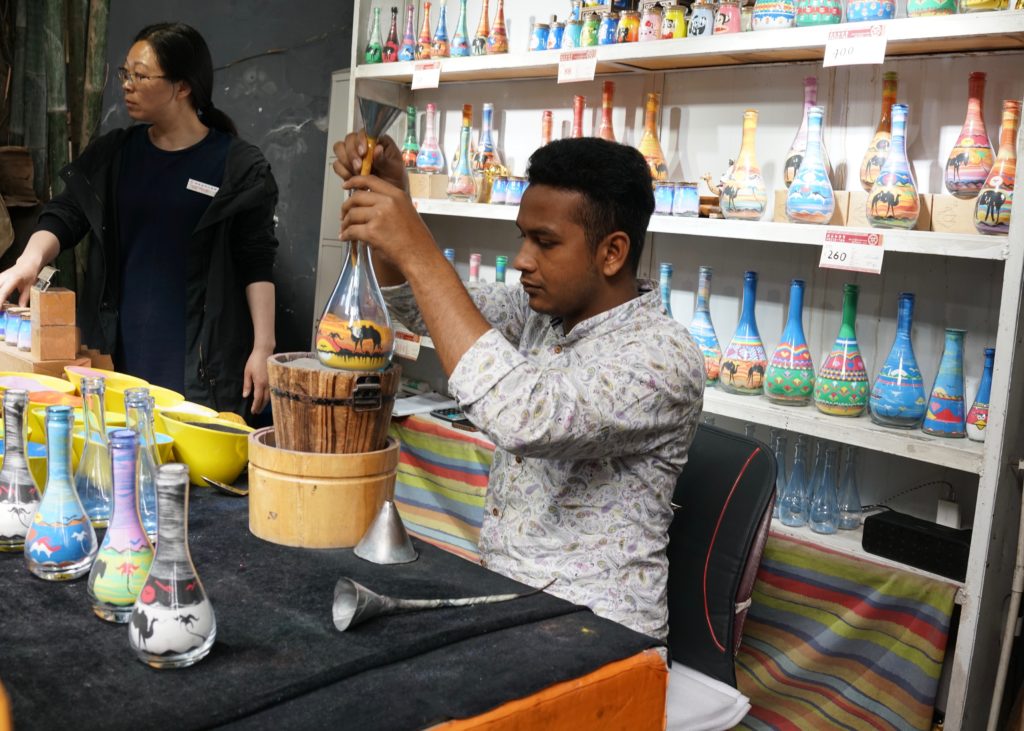
In one shop, we saw this silk loom.
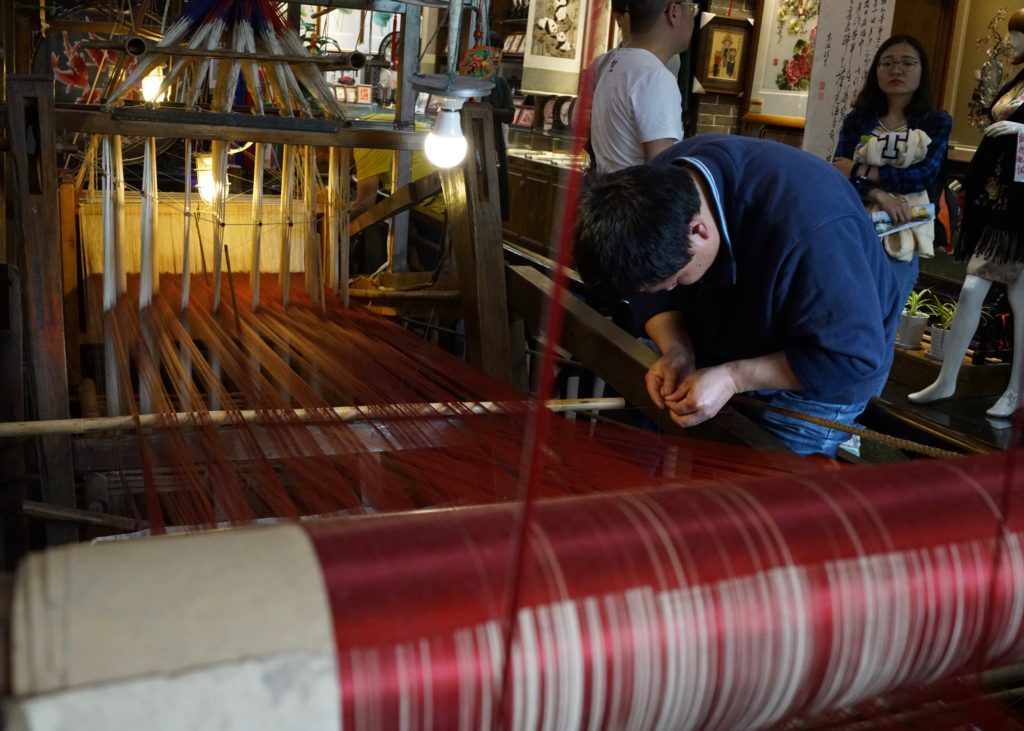
Here, Carol seals a bargain.
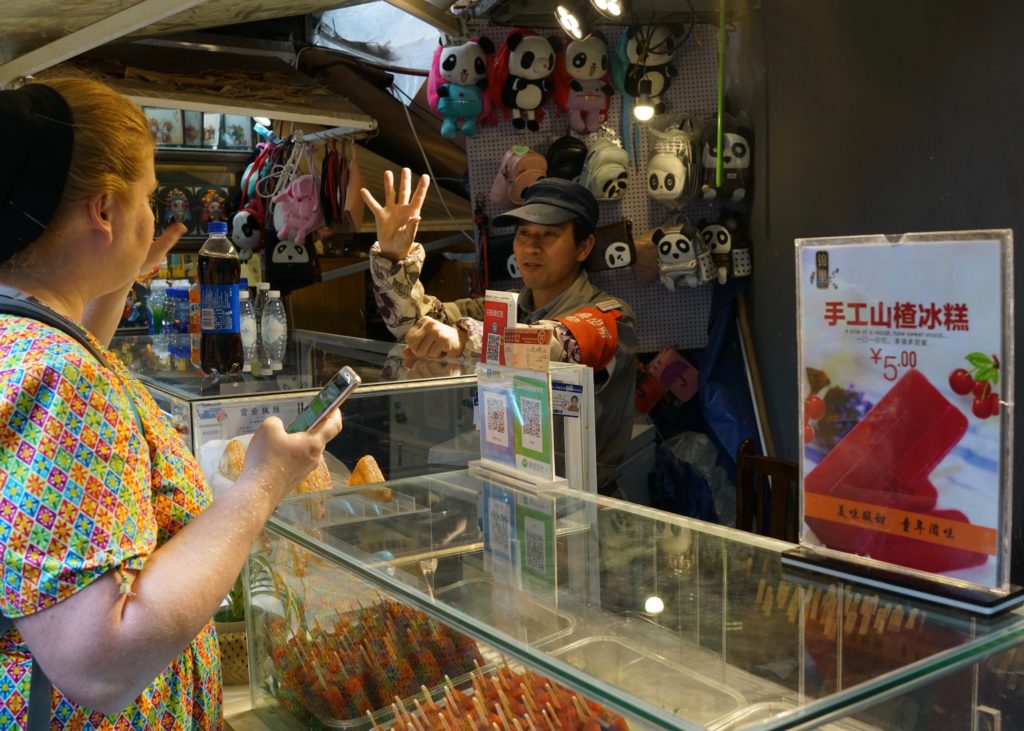
In the Tibetan area of the city close to Jinli, we saw many Buddhist monks.
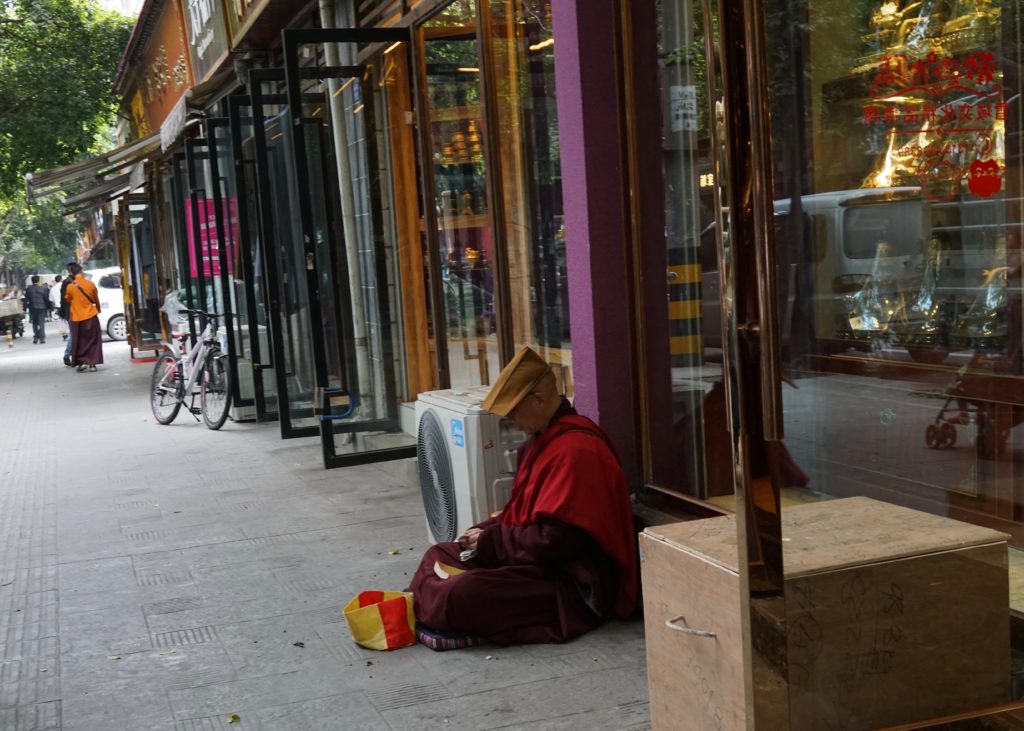
On another day, we hiked down a gorge where I saw scenery that reminded me very much of something I might see at Copper Falls, Wisconsin.
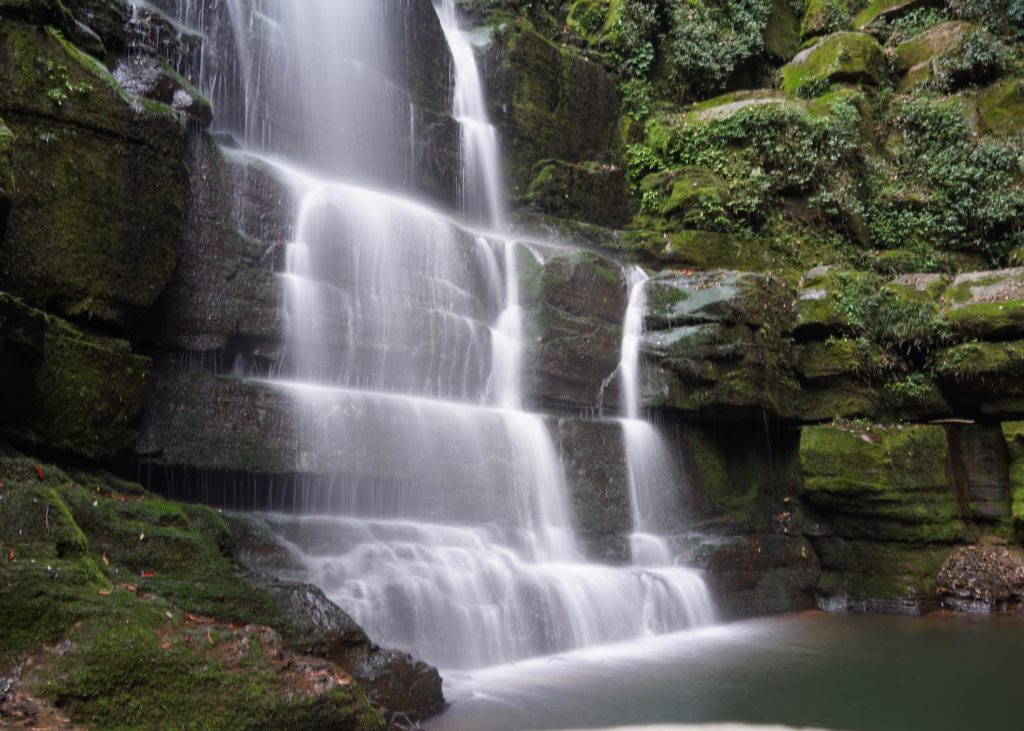
This gorge was much deeper, though. After we hiked all the way down, we took an elevator back to the top—well, almost to the top. After the elevator, we still had to scale a final stairway of 300 steps. Here is a photo of the elevator from the bottom looking up.
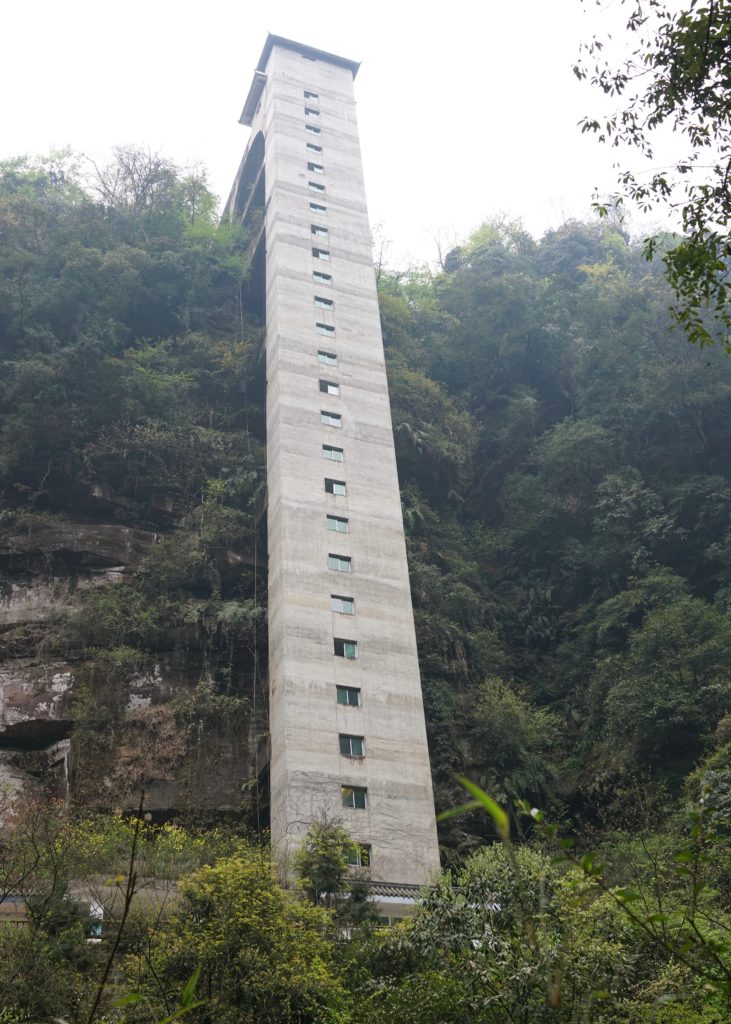
Our cousin also took us to see the Global Center, the largest building in the world in terms of floor space. It hosts offices, conference rooms, hotels, a university complex, a IMAX cinema, a skating rink, a swimming area, and a water park. In its center is a huge shopping mall.
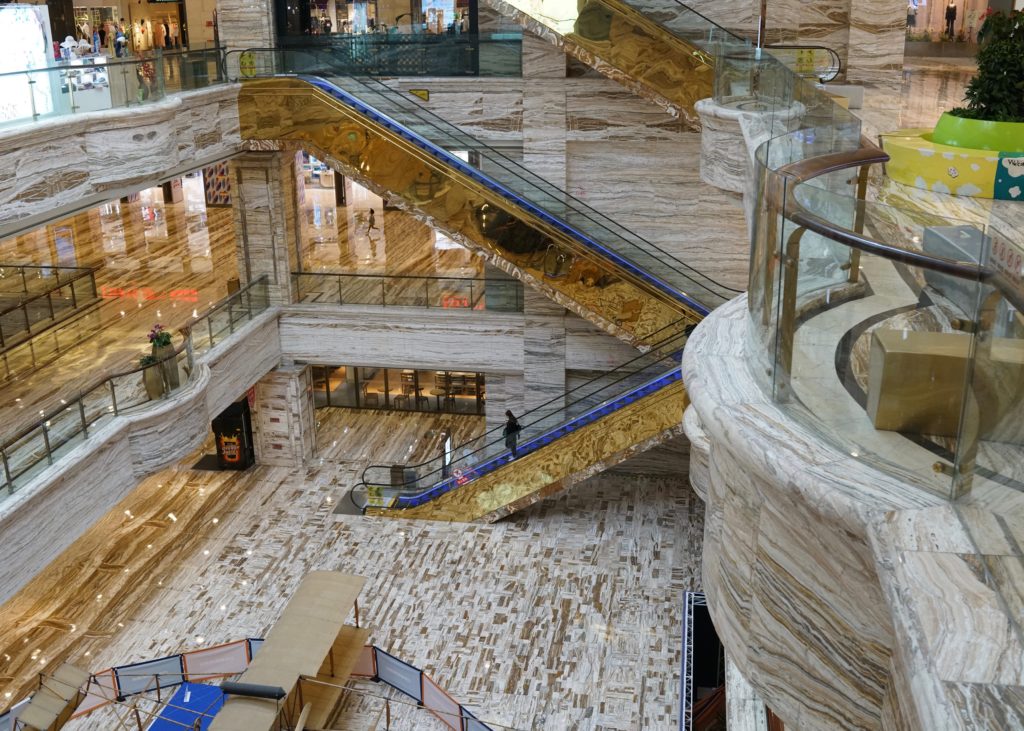
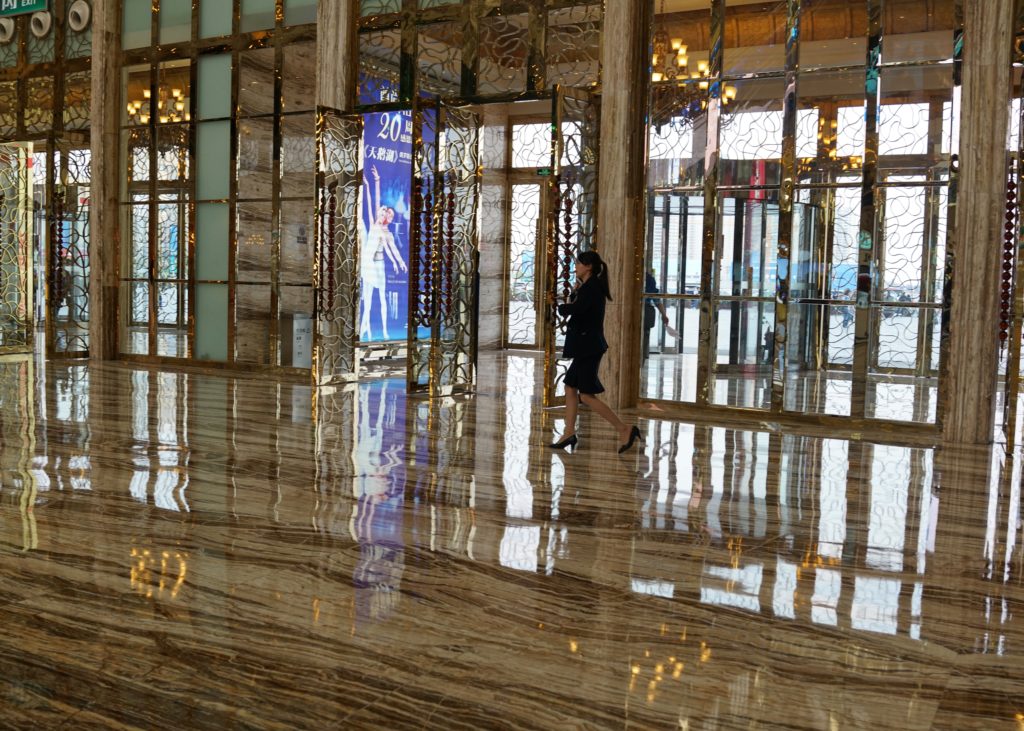
This photo was taken outside the Global Center, facing across the square to the other side of the street, where a massive new art center is scheduled to be built.
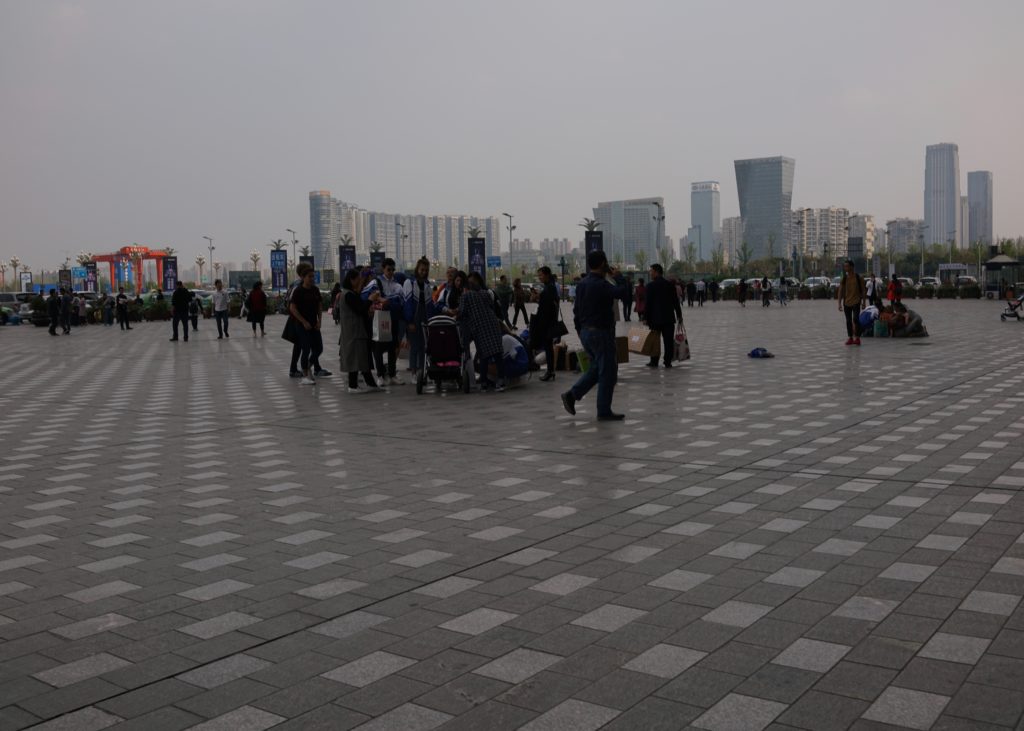
Throughout China, we occasionally saw children wearing red scarves, which is the uniform of the Young Pioneers, a Communist organization for young people.
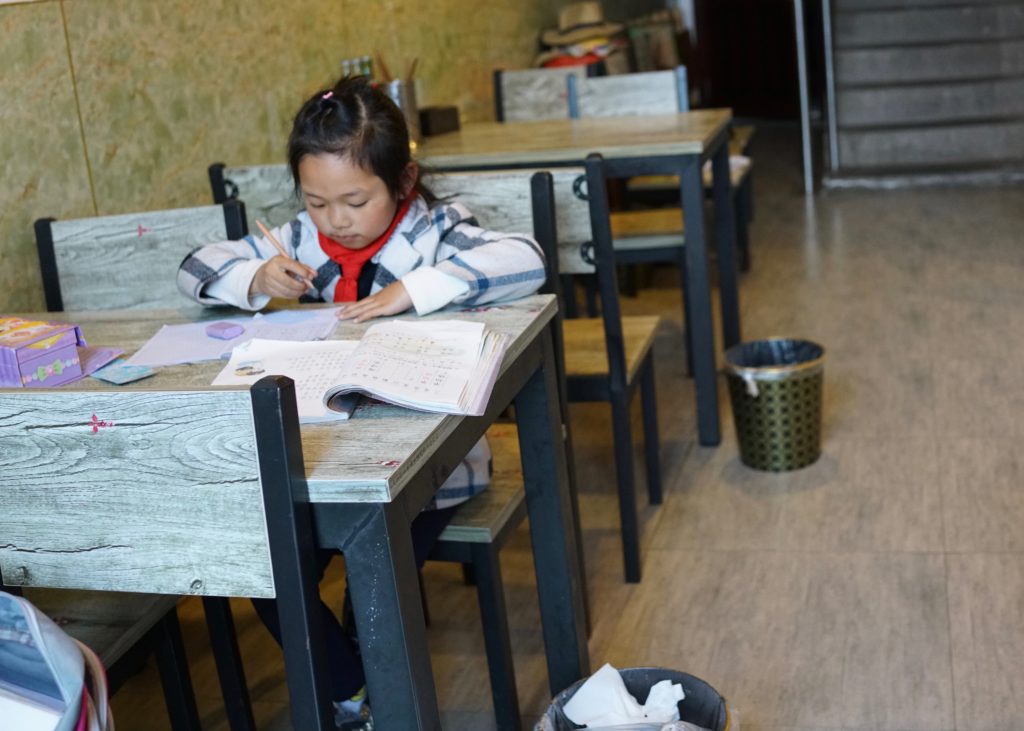
Here a couple of men crack whips, an exercise they like to do in the park not far from Travis and Judith’s complex. The whips are made from metal chain and leather. Their crack makes a sound like a gunshot which can be heard for miles.
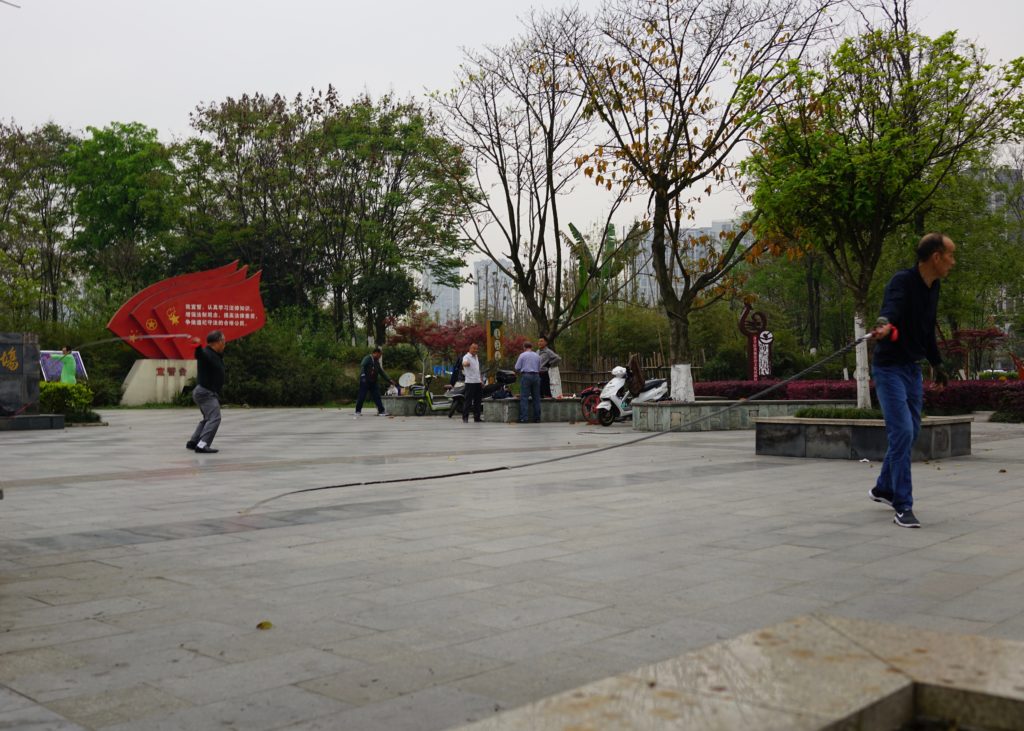
In the cities of China, we often saw people out exercising, whether whip cracking, playing tennis, doing Tai Chi, or using the public exercise equipment the government has installed at various places. We saw no overweight Chinese person—not one.
I will end this post with a cool photo of bicycles. You see them all over the Chinese cities, available to rent for a yuan or two an hour with an easy scan of your smartphone app. You can pick up your bike at the spot where you find it and leave it wherever you happen to ride. No problem—someone else needing transportation will find it later and ride it to a new spot. The system works beautifully.

In the next post, we’ll ride north a ways to another historic city in China—Xian.
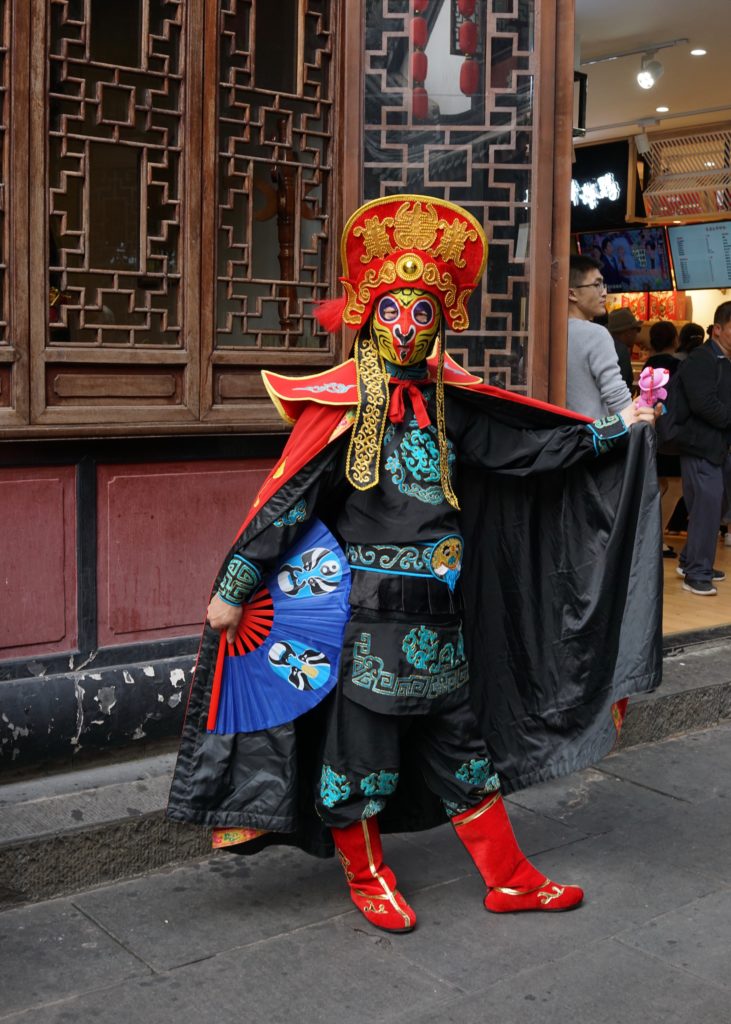
Lucinda — Your photographs are exquisite. Thank you for sharing them!
Hi! So interesting to read about my cousin Judith and her family on your blog! Thx!
You are welcome! Thanks for stopping by.
Thank you for sharing the wonderful photographs! The photographs were very informative and it is delightful to learn more about the people and their culture and all your experienced. Thanks for sharing your trip with us! Also was so pleased you included the photographs and information about the bicycles which is good for ones health and helps protect the environmental by using less resources.
Yes, I liked the idea of the bicycles, too. I will be moving to Boston this fall, and I wouldn’t mind if they had an easy bicycle rental system like they do in China.